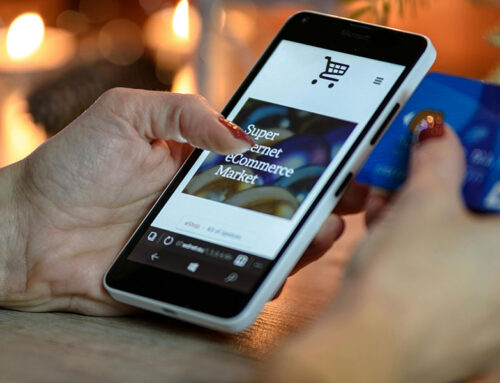In the ever-evolving landscape of ecommerce, the significance of storefront visual design has emerged as a critical determinant in the success of online businesses. As consumers increasingly shift towards digital shopping experiences, the way a website presents itself visually can profoundly impact customer behaviour and, ultimately, conversion rates.
With fierce competition in the virtual marketplace, businesses are compelled to go beyond the conventional understanding of web design and delve deeper into the psychology of visual aesthetics.
This article will explore the intricate relationship between storefront visual design and ecommerce conversions, uncovering the underlying principles that govern consumer perception, engagement, and decision-making.
By examining the latest research, consumer behaviour models, and real-world case studies, this investigation seeks to provide invaluable insights to online retailers and digital marketers seeking to optimize their storefronts for higher conversion rates, enhanced user experiences, and sustained business growth.
Through this article, we hope to unravel the art and science behind captivating storefront visual design and its profound impact on the ever-evolving world of ecommerce.
The Psychology of Visual Appeal in Ecommerce Storefront Design
The success of an ecommerce storefront is not solely dependent on the products it offers but also on the psychological impact of its visual design. Human psychology plays a significant role in how consumers perceive and interact with online stores. Attractive and well-designed storefronts evoke positive emotions in visitors, creating a sense of pleasure and satisfaction.
When customers are visually pleased, they are more likely to stay engaged and explore the website further. Visual appeal also establishes a crucial aspect of trust and credibility in the minds of consumers. A professionally designed storefront conveys a sense of professionalism and attention to detail, which can lead to increased confidence in the brand and its products.
Conversely, a poorly designed or outdated website may give the impression of a lack of care, potentially driving potential customers away. In the competitive world of ecommerce, first impressions matter greatly. Studies have shown that users form initial judgments about a website within a fraction of a second after landing on it.
This phenomenon, known as “thin slicing,” highlights the importance of a visually appealing storefront that captures the attention of visitors immediately. Additionally, the visual design of an ecommerce store can influence customer perceptions of product quality.
High-quality images, presented in an appealing manner, can make products appear more desirable and premium. On the other hand, low-quality images or a cluttered design might create doubts about the product’s authenticity or value.
With 92% of customers saying visuals are a top influencing factor when making purchases online, creating an ecommerce experience with unique imagery is important. And because these fruit snacks are at a much higher price point than others, communicating value with design elements is key to conversions.
Building Brand Identity Through Ecommerce Storefront Visual Design
In the competitive landscape of ecommerce, where numerous online stores vie for consumers’ attention, building a strong brand identity is a key differentiating factor. The visual design of an ecommerce storefront plays a crucial role in creating and communicating a distinctive brand identity.
A well-crafted storefront design can effectively convey a brand’s personality, values, and mission. Consistency is a fundamental aspect of brand identity, and the visual design plays a pivotal role in maintaining that consistency across all touchpoints.
By incorporating the brand’s colours, logos, and visual elements into the storefront design, businesses can reinforce their brand image and ensure that customers have a cohesive experience across the website. The use of consistent brand elements helps create brand recognition and recall.
When customers encounter the same colours, logos, and visual styles repeatedly, they begin to associate these elements with the brand, fostering familiarity and trust. This recognition not only encourages customers to return to the store but also makes it easier for them to identify the brand in various marketing channels.
Moreover, a well-defined brand identity creates an emotional connection with customers. When the visual design aligns with the brand’s values and resonates with the target audience, it can evoke specific emotions or associations.
For example, a minimalist and modern design may convey a sense of sophistication, while a bright and playful design can evoke feelings of joy and excitement. By evoking the right emotions, ecommerce businesses can establish a deeper connection with their customers and foster brand loyalty.
The Impact of Colour Psychology in Visual Design and Conversion Optimisation
Colour psychology plays a profound role in shaping the visual appeal and emotional impact of an ecommerce storefront. Colours have the remarkable ability to evoke specific emotions and associations, directly influencing consumer perceptions and behaviour. Understanding the psychological impact of different colours empowers ecommerce businesses to strategically use them to create a shopping environment that resonates with their target audience.
For example, warm colours like red, orange, and yellow are often associated with energy, excitement, and urgency. Incorporating these colours in call-to-action buttons or limited-time offers can instil a sense of urgency in customers, encouraging them to make quick purchasing decisions.
On the other hand, cool colours like blue, green, and purple are known for promoting feelings of calmness, trust, and reliability. Brands aiming to project a sense of stability and credibility may opt for these colours in their storefront design. Moreover, cultural and regional differences can also influence colour associations.
For instance, while white represents purity and cleanliness in Western cultures, it is associated with mourning in some Asian cultures. ecommerce businesses operating in global markets need to be mindful of these cultural nuances to avoid unintended misunderstandings or misinterpretations.
Strategic use of color psychology can also help in highlighting specific products or product categories. By choosing colours that complement or contrast with the products being displayed, businesses can draw attention to key items and guide customers towards desired actions.
Impact of Product Imagery in Conversions Rates
In the realm of ecommerce, where customers cannot physically interact with products before making a purchase, the role of product imagery and product experiences becomes paramount. High-quality and visually appealing product images serve as virtual touchpoints, providing customers with a sense of what they are considering buying.
The impact of product imagery goes beyond aesthetics; it directly influences consumer perceptions and behaviour. One of the primary functions of product imagery is to instil trust and confidence in potential customers. When customers can clearly see the details and features of a product through high-resolution images, it reduces uncertainty and minimizes the risk of making a wrong purchase.
By providing multiple images showcasing the product from various angles, ecommerce businesses can offer a more comprehensive view, increasing customers’ confidence in their buying decisions. Compelling product imagery also facilitates informed purchasing decisions.
Customers rely on product images to assess the quality, size, colour, and overall appearance of items they wish to purchase. High-quality images that accurately represent the product can effectively bridge the gap between online shopping and the immersive experience of shopping in a physical store.
The significance of A/B testing in visual design for optimizing conversions
A/B testing, also known as split testing, is a powerful and essential strategy in ecommerce storefront design aimed at achieving optimal performance and conversion rates. This data-driven approach involves comparing two or more variations of a design element to identify which one performs better.
By conducting controlled experiments and analysing real-time user data, ecommerce businesses can gain valuable insights into customer behaviour and preferences, allowing them to make informed decisions to enhance their storefront’s overall effectiveness. A/B testing offers a methodical and systematic way to fine-tune various design elements of an online store.
From testing different colour schemes and layouts to experimenting with product placements and call-to-action buttons, every aspect of the storefront can be scrutinized and optimized based on real user interactions.
For instance, ecommerce businesses can use A/B testing to evaluate the impact of different product images on conversion rates. By presenting one group of users with one set of product images and another group with an alternative set, the business can compare how each group responds to the visuals.
This data-driven approach allows them to identify which images resonate best with customers and lead to higher conversion rates. Furthermore, A/B testing provides the opportunity to test design changes gradually, minimizing the risk of implementing drastic modifications that might negatively impact user experience.
By incrementally testing and measuring the outcomes, businesses can make incremental and evidence-based improvements that steadily enhance the storefront’s performance.
Navigational Ease in ecommerce Storefront Design
Navigational ease is a critical factor in determining the impact of storefront visual design on ecommerce conversions. A visually appealing storefront may initially attract customers, but if they encounter difficulties in navigating the website or finding their desired products, it can lead to frustration and ultimately result in lost sales opportunities.
An intuitive and user-friendly navigation system is essential for guiding customers through the online shopping journey smoothly. To ensure navigational ease, ecommerce storefronts should feature a clear and straightforward menu that allows customers to access different product categories easily.
Well-labelled and logically organized menus enable customers to browse through products effortlessly, eliminating the need for endless scrolling or searching. Additionally, integrating a prominent search bar further enhances navigational ease, enabling users to find specific products quickly.
Mobile responsiveness is equally crucial for navigational ease. As an increasing number of customers shop on their mobile devices, it is essential to optimize the navigation system for smaller screens. Mobile-friendly menus and touch-friendly buttons enable seamless navigation on various devices, providing a consistent and pleasant experience for mobile users.
Moreover, breadcrumb navigation aids in enhancing the user experience by allowing customers to retrace their steps and easily return to previous pages. This feature is particularly useful when customers want to explore other options or compare products without losing their place in the online store.
A well-designed storefront should also offer clear calls-to-action (CTAs) that guide customers through the conversion process. Whether it’s adding items to the cart, proceeding to checkout, or signing up for newsletters, visible and strategically placed CTAs prompt users to take the desired actions.
Conclusion
The impact of storefront visual design on ecommerce conversions cannot be overstated. In the dynamic and highly competitive world of online shopping, a well-crafted visual design serves as a powerful tool to attract, engage, and convert customers. The psychology of visual appeal plays a pivotal role in shaping consumer perceptions and emotions, influencing their decision-making process.
By understanding colour psychology, ecommerce businesses can strategically use colours to evoke specific emotions and create a cohesive brand identity that resonates with customers. Building a strong brand identity through storefront visual design fosters trust and loyalty, making customers more likely to choose and recommend the brand.
Mobile responsiveness is crucial in today’s mobile-driven world, as customers increasingly shop on their smartphones and tablets. An ecommerce store that adapts seamlessly to different devices ensures a positive user experience and avoids potential sales loss due to mobile-related issues.





